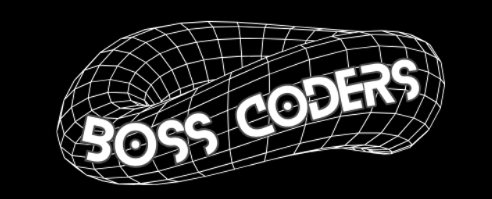Blog
The English Bonnet: A Timeless Accessory in Fashion and Culture

The “bonnet anglais,” or English bonnet, is an accessory that transcends mere functionality. It embodies a rich history, cultural significance, and evolving fashion trends. In this article, we will explore the origins, styles, and modern interpretations of the English bonnet, as well as its place in contemporary fashion and culture.
Historical Origins of the English Bonnet
Early Beginnings
The bonnet has roots that stretch back to the Middle Ages, where it served primarily as a protective garment. Initially, these head coverings were worn by both men and women, often crafted from wool or linen to shield the head from harsh weather conditions. By the 16th and 17th centuries, bonnets became more refined, with styles evolving to reflect social status and fashion trends.
The Rise of the Bonnet in English Society
The English bonnet gained prominence in the 18th century, particularly among women. It became a staple accessory in women’s fashion, characterized by its wide brim and elaborate decorations. During this period, bonnets were often adorned with ribbons, flowers, and lace, reflecting the wearer’s taste and social standing.
The bonnet’s popularity continued into the 19th century, where it was emblematic of Victorian fashion. Women of all ages wore bonnets, often crafted with luxurious fabrics and intricate designs. This period marked the height of the bonnet’s influence in English fashion, making it a symbol of femininity and grace.
The Cultural Significance of the Bonnet
The English bonnet is more than just a fashion statement; it carries cultural connotations as well. In literature and art, bonnets often symbolize innocence, purity, and the domestic sphere. Classic novels, such as Jane Austen’s works, frequently feature characters adorned in bonnets, illustrating their role in the societal norms of the time.
Additionally, the bonnet has been embraced in various cultural ceremonies. In rural England, bonnets were often worn during festivals and celebrations, reflecting local customs and traditions. This cultural significance adds depth to the understanding of the bonnet beyond its aesthetic appeal.
Evolution of Styles
The Victorian Bonnet
During the Victorian era, the bonnet reached its pinnacle of popularity. These bonnets featured a structured frame and were often made from luxurious materials such as silk, taffeta, and lace. The wide brims provided a sense of modesty while allowing for intricate embellishments.
Women often paired their bonnets with elaborate dresses, creating a harmonious and sophisticated look. The Victorian bonnet became an essential accessory, signaling a woman’s social status and refinement.
The Edwardian Era and Beyond
The early 20th century saw further evolution in bonnet styles. The Edwardian era introduced the “picture hat,” which boasted a larger brim and a more flamboyant aesthetic. While bonnets remained popular, they began to take on different forms, adapting to the changing tastes of the times.
By the mid-20th century, bonnets became less common as fashion trends shifted toward more practical and streamlined headwear. However, the essence of the bonnet endured, influencing later styles and inspiring modern interpretations.
Modern Interpretations of the Bonnet
Revival in Contemporary Fashion
In recent years, the English bonnet has experienced a resurgence in popularity. Fashion designers and brands have drawn inspiration from historical styles, reimagining the bonnet for modern wearers. This revival has been fueled by a growing interest in vintage fashion and sustainable practices.
Contemporary bonnets often incorporate modern fabrics and techniques while retaining the charm of their historical predecessors. Designers have experimented with colors, patterns, and embellishments, creating unique pieces that appeal to a new generation of fashion enthusiasts.
Cultural Influences and the Bonnets Today
The influence of the English bonnet has also expanded globally. In various cultures, headwear has significant symbolic meanings. The fusion of the bonnet with other cultural styles has led to diverse interpretations, showcasing the accessory’s versatility.
Social media has played a crucial role in promoting the bonnet’s revival. Fashion influencers and bloggers often showcase bonnets in their outfits, demonstrating how this timeless accessory can complement modern aesthetics. The bonnet has become a symbol of individuality, allowing wearers to express their unique styles.
Bonnets in Everyday Wear
Today, bonnets are not limited to formal occasions or historical reenactments. They have found a place in everyday wear, appealing to those who appreciate vintage aesthetics. Many people incorporate bonnets into casual outfits, pairing them with jeans, sundresses, or even athleisure.
The versatility of the bonnet allows it to transition seamlessly from casual to formal settings. With the right styling, a bonnet can elevate an outfit, making it suitable for various occasions, from picnics to garden parties.
How to Style an English Bonnet
Choosing the Right Bonnet
When selecting a bonnet, consider factors such as fabric, color, and embellishments. Opt for materials that suit the season; lightweight fabrics like cotton or linen are ideal for warmer months, while wool or felt may be better for cooler weather.
Pairing with Outfits
- Casual Chic: For a relaxed look, pair a cotton bonnet with a simple white tee and high-waisted jeans. This combination offers a fresh, laid-back vibe perfect for weekend outings.
- Bohemian Style: Embrace a boho aesthetic by wearing a floral or patterned bonnet with a flowing maxi dress and ankle boots. This look exudes a carefree spirit while highlighting the bonnet’s charm.
- Vintage Glamour: For a more sophisticated outfit, choose a silk or lace bonnet and pair it with a tailored dress or skirt. Add vintage-inspired accessories, such as pearl earrings or a clutch, to complete the look.
- Seasonal Adaptations: In winter, layer a wool bonnet over a cozy sweater and scarf. In summer, opt for a lightweight bonnet that shields you from the sun while adding flair to your outfit.
Experimenting with Colors and Patterns
Don’t be afraid to experiment with colors and patterns when styling a bonnet. Bold hues can make a statement, while pastel shades offer a softer look. Floral patterns or polka dots can add a playful touch, enhancing your overall aesthetic.
The Bonnet in Popular Culture
Literature and Film
The English bonnet has made appearances in literature and film, solidifying its place in popular culture. Classic adaptations of novels often feature characters dressed in bonnets, evoking nostalgia and romanticizing historical periods.
Films set in Regency or Victorian eras often showcase elaborate bonnets, contributing to the visual storytelling of the time. These portrayals not only celebrate the bonnet’s beauty but also highlight its role in societal norms and expectations.
Social Media Influence
The rise of social media has given the bonnet a platform for renewed appreciation. Influencers and fashion enthusiasts share their bonnet styles on platforms like Instagram and TikTok, creating trends that resonate with audiences.
Through hashtags and viral challenges, the bonnet has become a fashion statement for those who appreciate vintage-inspired aesthetics. This online presence fosters a community of bonnet lovers who celebrate creativity and individuality.
The Environmental Impact of Bonnets
Sustainable Fashion Choices
As the fashion industry increasingly emphasizes sustainability, the bonnet aligns well with eco-friendly practices. Many modern bonnets are made from organic or recycled materials, appealing to environmentally conscious consumers.
Investing in quality bonnets that stand the test of time reduces the need for fast fashion purchases, promoting a more sustainable wardrobe. By choosing timeless accessories like bonnets, individuals can contribute to a more sustainable fashion future.
Handcrafted and Artisanal Bonnets
Another trend in the bonnet market is the rise of handcrafted and artisanal pieces. Many designers prioritize craftsmanship, creating bonnets with care and attention to detail. Supporting local artisans and small businesses not only promotes sustainability but also enhances the unique appeal of the accessory.
Conclusion: The Timeless Allure of the English Bonnet
The “bonnet anglais” is a testament to the enduring nature of fashion and cultural heritage. From its historical roots to contemporary interpretations, the bonnet remains a beloved accessory that transcends generations. Its ability to evolve while maintaining its charm speaks to the versatility and significance of this timeless piece.
As we embrace modern styles and sustainable practices, the English bonnet stands as a symbol of individuality and creativity. Whether worn for special occasions or incorporated into everyday wear, the bonnet continues to inspire fashion enthusiasts around the world.
Blog
The Role of an Ingénieur Qualité: A Comprehensive Guide

The world of engineering and manufacturing is increasingly focused on quality, and this focus has brought about the need for specialized professionals who ensure that products meet specific standards and customer expectations. One such professional is the ingénieur qualité, or quality engineer, whose role is crucial in maintaining and improving the quality of products and processes in various industries. In this article, we will explore the responsibilities, skills, and challenges of an ingénieur qualité, and discuss the importance of quality engineering in today’s competitive business environment.
What is an Ingénieur Qualité?

The term “ingénieur qualité” is French for “quality engineer,” and it refers to a professional who is responsible for ensuring that products, services, and processes meet predefined quality standards. These standards are often outlined by industry regulations, customer specifications, or company policies. An ingénieur qualité works closely with different departments—such as production, research and development (R&D), and supply chain management—to implement quality control systems and improve processes.
Quality engineers are employed in various sectors, including manufacturing, automotive, aerospace, pharmaceuticals, and electronics, among others. The role may involve testing, auditing, process analysis, troubleshooting, and creating improvement plans.
Key Responsibilities of an Ingénieur Qualité
1. Quality Assurance and Control
One of the primary responsibilities of an ingénieur qualité is to ensure that products meet required specifications. This involves designing and implementing quality assurance (QA) and quality control (QC) processes, which include inspections, testing, and validation procedures. They monitor and measure product quality at different stages of production, ensuring that any defects are identified and corrected before the product reaches the customer.
Quality engineers are often tasked with developing sampling plans, defining acceptance criteria, and managing corrective and preventive actions (CAPA). They work to reduce defects and variation in the product by identifying root causes and proposing solutions.
2. Process Improvement
In addition to monitoring product quality, an ingénieur qualité is responsible for continuously improving manufacturing processes. By analyzing data and identifying inefficiencies, they seek ways to enhance production methods, reduce waste, and improve overall productivity. This involves applying various methodologies like Six Sigma, Lean Manufacturing, or Total Quality Management (TQM).
The quality engineer may conduct process audits, analyze performance data, and use tools such as statistical process control (SPC) charts to track and measure improvements. The goal is to create a culture of continuous improvement and to ensure that processes evolve to meet ever-changing industry standards.
3. Risk Management
Another critical aspect of the role of an ingénieur qualité is risk management. They assess potential risks to product quality at every stage of production, from design to delivery. This includes evaluating the impact of process changes, equipment failures, or supplier issues on the final product. Quality engineers must be proactive in identifying risks and developing strategies to mitigate them.
They work closely with suppliers to ensure that raw materials and components meet quality standards before they are used in production. By establishing strong supplier relationships and maintaining effective communication, quality engineers help reduce the likelihood of quality problems arising in the supply chain.
4. Compliance and Regulatory Standards
Many industries have strict regulations regarding product quality and safety. An ingénieur qualité ensures that the organization adheres to these regulatory requirements, which may include industry-specific standards such as ISO 9001 (quality management systems), ISO 13485 (medical device quality), or FDA guidelines for pharmaceuticals and healthcare products.
They prepare and maintain documentation to demonstrate compliance, conduct audits, and work with external agencies to ensure that the company is meeting all required standards. This is particularly important in industries like aerospace, automotive, and healthcare, where non-compliance can result in significant legal and financial consequences.
5. Training and Education
As part of their role, quality engineers often take on the responsibility of training other employees in quality standards, best practices, and the use of quality management tools. This could involve conducting workshops or creating training materials to ensure that everyone in the organization is aligned with the company’s quality goals.
By fostering a culture of quality across departments, an ingénieur qualité helps ensure that quality is not just the responsibility of the quality department but is integrated into every aspect of the organization’s operations.
Skills Required for an Ingénieur Qualité

To excel in the role of an ingénieur qualité, individuals must possess a combination of technical knowledge, analytical skills, and interpersonal abilities. Below are some of the key skills that are essential for success in this field.
1. Attention to Detail
Quality engineering requires a high level of attention to detail, as even the smallest defect or deviation from standards can lead to significant problems. An ingénieur qualité must be able to identify issues early in the production process and take corrective action to prevent defects from reaching customers.
2. Problem-Solving Skills
An important part of the quality engineer’s job is troubleshooting problems that arise during production or after a product has been delivered. They must be able to analyze complex situations, identify the root cause of the issue, and propose effective solutions. This involves critical thinking and the ability to use various problem-solving tools such as fishbone diagrams, failure mode and effects analysis (FMEA), or root cause analysis (RCA).
3. Knowledge of Quality Standards and Methodologies
A deep understanding of industry standards, quality management systems (QMS), and continuous improvement methodologies is vital for an ingénieur qualité. Knowledge of ISO 9001, Lean, Six Sigma, and other quality improvement frameworks is essential to ensure that the organization is following best practices and complying with regulatory requirements.
4. Data Analysis and Statistical Skills
Data analysis is a core part of quality engineering. An ingénieur qualité needs to be comfortable working with data, performing statistical analysis, and using software tools such as Minitab or SPSS to analyze trends and track performance. Statistical tools like control charts, histograms, and regression analysis are often used to monitor quality metrics and make data-driven decisions.
5. Communication and Teamwork
Effective communication skills are crucial for quality engineers, as they often work with cross-functional teams to resolve issues, share findings, and implement improvements. They need to clearly articulate complex technical concepts to non-technical staff and ensure that quality standards are understood at all levels of the organization.
The Importance of the Ingénieur Qualité in the Modern Business Environment
In today’s globalized and highly competitive business environment, quality has become a major differentiator for companies. Customers expect high-quality products that are safe, reliable, and perform as promised. For companies, maintaining consistent quality is essential to sustaining customer loyalty and avoiding costly recalls or product failures.
An ingénieur qualité plays a pivotal role in meeting these expectations. By implementing and overseeing robust quality control systems, continuously improving processes, and ensuring compliance with industry standards, they help companies build and maintain their reputation for delivering quality products. Moreover, their work can contribute to cost savings by reducing defects, minimizing waste, and improving operational efficiency.
In industries like automotive or aerospace, where safety and reliability are paramount, the role of the ingénieur qualité is even more critical. In these sectors, quality failures can have catastrophic consequences, and engineers must be highly vigilant in ensuring that all components and systems function as expected.
Challenges Faced by Ingénieur Qualité
While the role of an ingénieur qualité is essential to ensuring product quality, it is not without its challenges. Some of the common challenges faced by quality engineers include:
Meeting Tight Deadlines
In fast-paced industries, quality engineers often face pressure to meet strict deadlines while ensuring that quality is not compromised. Balancing speed with precision can be difficult, especially when working with complex systems or products.
Dealing with Changing Regulations
Regulatory standards are constantly evolving, and an ingénieur qualité must stay up-to-date with these changes to ensure compliance. This requires ongoing education and a proactive approach to understanding new guidelines and best practices.
Managing Supplier Relationships
Maintaining quality throughout the supply chain can be challenging, especially when working with multiple suppliers who may have different quality standards. Quality engineers must communicate effectively with suppliers and ensure that raw materials and components meet the company’s specifications.
Cost Constraints
Quality engineers must find ways to improve quality while staying within budget constraints. This may involve finding cost-effective solutions for testing, inspections, or process improvements without sacrificing product integrity.
Conclusion
The role of an ingénieur qualité is integral to the success of modern manufacturing and production processes. These professionals ensure that products meet quality standards, help improve operational processes, and mitigate risks. Their work touches on virtually every aspect of production, from design and testing to process improvement and regulatory compliance. In an increasingly competitive global marketplace, the expertise of a quality engineer is essential to building trust with customers and maintaining a company’s reputation.
With the right skills, attention to detail, and commitment to continuous improvement, an ingénieur qualité can make a significant impact on the quality, efficiency, and overall success of an organization. As industries continue to evolve and customer expectations increase, the demand for skilled quality engineers will only continue to grow, making it an exciting and rewarding career choice.
Blog
Axushl: Revolutionizing the Future of Technology and Innovation

In today’s fast-paced world, where technology is at the forefront of almost every industry, there are constant advancements that shape the way we live, work, and interact. Among the new wave of innovative solutions, Axushl is making significant strides, positioning itself as a trailblazer in the technology and innovation sector. With its cutting-edge approaches and transformative solutions, Axushl is poised to redefine how businesses and individuals approach technology, sustainability, and problem-solving.
This article explores the story of Axushl, its core values, groundbreaking contributions, and the future of the tech ecosystem with Axushl at the helm of innovation.
What is Axushl?

Axushl is a dynamic and forward-thinking company at the intersection of technology, sustainability, and human-centric design. Its focus is on developing and providing advanced solutions that cater to a wide range of industries, from IT and software development to smart cities, sustainable practices, and digital transformation. Axushl’s vision is to drive progress through technology while maintaining a deep commitment to the environment and societal impact.
Axushl’s portfolio includes groundbreaking innovations that span a variety of sectors. Whether it’s revolutionizing cloud computing, reshaping artificial intelligence (AI), or leading the charge in sustainable tech solutions, the company has built a reputation for not just following trends but setting them.
Axushl’s Vision: Empowering Businesses and Individuals
The core philosophy of Axushl is empowerment. The company believes that true technological progress must not only meet the demands of businesses but also enrich the lives of individuals and communities. Axushl aims to make technology more accessible, understandable, and beneficial for everyone, regardless of their background or resources.
Through its range of solutions, Axushl has helped organizations across various sectors unlock new opportunities for growth and innovation. Its products and services have enabled businesses to optimize operations, increase efficiency, and reduce costs, all while keeping sustainability at the forefront. By focusing on human-centered innovation, Axushl ensures that technology enhances people’s lives, rather than complicating them.
Axushl’s Commitment to Innovation
One of the cornerstones of Axushl’s success is its relentless drive for innovation. The company is constantly evolving, researching new technologies, and adopting the latest breakthroughs to stay ahead of the curve. Axushl invests heavily in research and development (R&D), with a dedicated team of engineers, designers, and thought leaders collaborating on projects that push the boundaries of what is possible.
Key areas of innovation include:
- Artificial Intelligence (AI) and Machine Learning: Axushl has been at the forefront of applying AI and machine learning (ML) in real-world business applications. From predictive analytics to customer insights and automated processes, Axushl’s AI-powered solutions are transforming industries such as healthcare, finance, logistics, and more.
- Cloud Computing: The future of business is in the cloud, and Axushl understands this better than anyone. By providing scalable, secure, and cost-effective cloud solutions, the company enables businesses to store, manage, and access data from anywhere in the world. Their cloud infrastructure solutions have helped companies streamline their operations and ensure seamless collaboration across teams, regardless of location.
- Sustainable Technology: As climate change becomes an ever-pressing issue, Axushl is committed to developing solutions that support environmental sustainability. Through energy-efficient technologies, green computing, and smart resource management systems, Axushl helps businesses reduce their carbon footprint while simultaneously driving technological advancement.
- Smart Cities and IoT: Axushl is pioneering efforts to create smart cities, where IoT (Internet of Things) technology connects everyday devices to improve urban living. From smart traffic systems to energy-efficient buildings, Axushl’s contributions are shaping the cities of tomorrow.
Axushl’s Impact Across Industries
Axushl’s diverse range of solutions has had a profound impact on several industries, improving operations and creating long-lasting value. Let’s explore how Axushl is revolutionizing key sectors:
1. Healthcare
The healthcare industry has long been in need of digital transformation, and Axushl has been a key player in driving this change. By leveraging AI, machine learning, and data analytics, the company has created solutions that enhance patient care, streamline operations, and reduce costs. From predictive models that anticipate patient needs to integrated systems that improve communication between providers, Axushl is improving both patient outcomes and operational efficiencies.
One of the company’s most notable healthcare innovations includes an AI-driven diagnostic tool that helps doctors and medical professionals detect early signs of diseases such as cancer. By analyzing medical images and patient data, the tool can provide faster and more accurate diagnoses, enabling timely treatment.
2. Finance
In the finance sector, Axushl has introduced advanced tools that enhance decision-making, reduce risk, and ensure greater security. Its fintech solutions use AI and big data to analyze market trends, optimize trading strategies, and offer personalized services to customers. Moreover, Axushl’s blockchain-based technologies are providing unparalleled transparency and security in financial transactions, addressing the growing concerns around fraud and data breaches.
3. Retail and E-Commerce
For the retail and e-commerce industries, Axushl has developed innovative tools that enhance customer experiences and improve operational efficiency. By utilizing AI to personalize shopping experiences and optimize inventory management, businesses can reduce overheads and increase customer satisfaction. Additionally, Axushl’s supply chain solutions help retailers track products in real time and reduce wastage, all while improving sustainability practices.
4. Manufacturing and Logistics
In manufacturing, Axushl is leading the charge in smart manufacturing and supply chain automation. With AI-powered robotics, predictive maintenance, and real-time data analytics, Axushl helps businesses optimize production lines, reduce downtime, and ensure better product quality. This has allowed companies to improve productivity and drive down costs, while remaining competitive in an increasingly globalized market.
5. Education
Axushl’s contributions to education include creating platforms that enhance online learning experiences, making education more accessible, and fostering collaboration among students and instructors. By leveraging AI and VR/AR technology, Axushl is reshaping the future of education, offering students personalized learning paths and immersive environments that make learning more engaging and effective.
Axushl’s Approach to Sustainability
One of the most important aspects of Axushl’s business model is its commitment to sustainability. In a world increasingly concerned with the environment, the company has integrated green principles into its products and services. Axushl is actively working on solutions that reduce waste, promote energy efficiency, and ensure that technology is used in an environmentally responsible way.
For example, the company has pioneered energy-efficient computing systems that use less power while delivering greater performance. Additionally, Axushl’s sustainable data centers leverage renewable energy sources, reducing their carbon footprint significantly. By providing businesses with the tools they need to reduce their environmental impact, Axushl is contributing to a greener future.
Axushl’s Commitment to Security and Privacy
In an era where cybersecurity is more critical than ever, Axushl prioritizes the safety and privacy of its users. The company’s solutions are designed with robust security features that safeguard sensitive data from cyber threats and unauthorized access. Whether it’s securing financial transactions, protecting patient data, or ensuring the confidentiality of business operations, Axushl takes security seriously.
By integrating blockchain technology, encryption protocols, and multi-layered security systems, Axushl is helping organizations build trust with their customers while maintaining compliance with global data protection regulations such as GDPR and CCPA.
The Future of Axushl
As Axushl continues to innovate and expand its global footprint, the future looks bright for the company. With plans to further enhance its AI capabilities, explore new industries, and push the boundaries of sustainable technology, Axushl is well-positioned to lead the tech industry into the next decade. The company’s focus on collaboration, sustainability, and cutting-edge technology will continue to drive its success and influence in the market.
The next phase of Axushl’s journey includes exploring new avenues such as quantum computing, space technology, and advanced robotics. By investing in the technologies of tomorrow, Axushl aims to stay at the forefront of innovation and continue making a positive impact on the world.
Conclusion: Axushl’s Role in Shaping the Future
Axushl is not just a technology company; it is a force for positive change and innovation. Through its relentless pursuit of excellence, commitment to sustainability, and ability to drive progress across multiple sectors, Axushl is transforming the way businesses and individuals engage with technology. With a forward-thinking approach and a strong ethical foundation, Axushl is shaping the future of tech and paving the way for a brighter, more sustainable tomorrow.
Blog
Understanding Miscarriage: The Emotional and Physical Journey of Loss

A miscarriage is one of the most emotionally challenging experiences a woman can endure. Whether it happens early in pregnancy or later, the emotional toll can be significant, affecting not only the individual but their family and support network as well. Despite being a common occurrence, miscarriage remains a topic often shrouded in silence. This article will explore the emotional and physical aspects of miscarriage, offering support for those who have gone through this loss while also breaking down some of the myths surrounding it.
We’ll also look into the medical, psychological, and societal factors that shape the experience of miscarriage, aiming to create a broader understanding of this sensitive subject.
1. What is a Miscarriage?

A miscarriage, also known as a spontaneous abortion, is the natural loss of a pregnancy before the 20th week. It can occur for a variety of reasons, some of which may not be preventable. It’s important to remember that a miscarriage does not reflect any fault of the mother and is often beyond anyone’s control.
In the early stages of pregnancy, a miscarriage typically occurs before the fetus is able to survive independently outside the womb. While there are varying degrees of miscarriage (e.g., missed miscarriage, incomplete miscarriage), the core experience remains the same: loss.
2. Causes of Miscarriage
The causes of miscarriage are often unknown, but in some cases, they may be linked to specific health issues or factors. Understanding these potential causes can help to demystify the experience and reduce the stigma associated with miscarriage.
Genetic Abnormalities
The most common cause of miscarriage in the first trimester is a genetic abnormality in the fetus. These abnormalities can occur when the sperm or egg that forms the embryo has a genetic flaw, preventing the embryo from developing normally.
Hormonal and Medical Conditions
Conditions such as polycystic ovary syndrome (PCOS), thyroid disorders, diabetes, and uterine abnormalities may increase the risk of miscarriage. These conditions can disrupt the balance of hormones required for a healthy pregnancy or affect the uterus’s ability to support a growing fetus.
Age and Reproductive Health
As women age, particularly after the age of 35, the likelihood of experiencing a miscarriage increases. Additionally, factors such as smoking, excessive alcohol use, drug use, and even obesity can heighten the risk of miscarriage.
Lifestyle Factors
In addition to the medical factors mentioned, certain lifestyle habits, such as smoking or excessive stress, have been linked to an increased risk of miscarriage. It’s also essential to avoid exposure to harmful environmental toxins or radiation.
3. The Emotional Impact of Miscarriage
Miscarriage is often accompanied by a profound sense of loss. Women (and their partners) may experience a mix of emotions, including sadness, guilt, anger, confusion, and even a sense of failure. Grieving a miscarriage is just as important as grieving any other form of loss.
Feelings of Guilt and Blame
Many women feel personally responsible for the miscarriage, but the truth is that most miscarriages occur due to factors outside their control. It’s crucial for women to understand that miscarriage is often a natural occurrence and nothing they did caused the pregnancy loss.
Anxiety and Fear of Future Pregnancies
After a miscarriage, some women experience anxiety about future pregnancies. The fear that it might happen again can be overwhelming, leading to a cycle of worry and stress that may interfere with the healing process.
Partner’s Emotional Experience
It’s important to recognize that a miscarriage also affects the partner. While society often focuses on the woman’s experience, partners—whether male or female—also grieve the loss. Men, in particular, might feel helpless or unsure how to express their grief in a society where men are not always encouraged to show vulnerability.
4. The Physical Impact of Miscarriage
While the emotional effects of a miscarriage are often more visible, the physical side can be equally challenging. Women who experience a miscarriage may undergo physical symptoms such as bleeding, cramping, or tissue loss, all of which can be difficult to cope with.
Symptoms of a Miscarriage
Some common symptoms of a miscarriage include:
- Bleeding: Light bleeding may occur in early pregnancy and does not always indicate miscarriage, but heavy bleeding or passing large clots may.
- Cramping: Severe cramping or abdominal pain is another sign that a miscarriage could be happening.
- Loss of Pregnancy Symptoms: A sudden loss of pregnancy symptoms, such as nausea or breast tenderness, may also signal a miscarriage.
Medical Procedures After a Miscarriage
Once a miscarriage has been confirmed, the body may naturally expel the pregnancy tissue, or medical intervention may be required. This can include medication to help complete the miscarriage or a surgical procedure called a dilation and curettage (D&C), which removes the pregnancy tissue from the uterus.
The physical recovery from a miscarriage varies depending on the individual and the circumstances of the loss. Some women recover quickly, while others may need time both physically and emotionally to heal.
5. Miscarriage and Society: The Need for Open Dialogue
One of the main challenges women face after a miscarriage is the stigma and silence surrounding the topic. Miscarriage is often not openly discussed in society, leaving many women to feel isolated in their grief. However, starting a conversation around miscarriage can help alleviate the emotional burden and provide a support network for those who are grieving.
Breaking the Silence
Opening up about miscarriage allows women to find solidarity with others who have experienced the same loss. It is essential for society to create safe spaces where women can talk about their grief and ask questions without fear of judgment or discomfort.
Support Groups and Resources
There are many resources available to help women and their partners navigate the grieving process. Support groups—whether in-person or online—can be a lifeline for those dealing with the pain of miscarriage. Speaking to a counselor or therapist trained in grief support can also help individuals cope with the emotional fallout.
6. Coping with Miscarriage: Healing and Recovery
While the emotional and physical aspects of miscarriage are undeniably difficult, it is important to remember that recovery is possible. Everyone’s journey is unique, and there is no right or wrong way to grieve.
Taking Time to Grieve
Grieving is a natural process that takes time. It’s important for individuals to allow themselves to feel their emotions and seek help when needed. Rushing the process or suppressing emotions can complicate healing.
Self-Care and Physical Healing
In addition to seeking emotional support, taking care of oneself physically is essential. This may include getting enough rest, eating nourishing foods, and engaging in light physical activity when ready. Over time, the body will physically recover from the miscarriage, though the emotional scars may take longer to heal.
Rebuilding Hope for Future Pregnancies
For women who wish to try for another pregnancy, it can be helpful to give themselves time to heal emotionally and physically before attempting to conceive again. Some women may benefit from speaking to a fertility specialist to better understand their health and any potential risks moving forward.
7. When to Seek Medical Advice After a Miscarriage
It’s important to know when to seek medical help. If a woman experiences any of the following, she should contact her doctor or healthcare provider immediately:
- Heavy bleeding or passing large clots
- Severe or unrelenting pain
- Signs of infection, such as fever, chills, or foul-smelling discharge
- Difficulty conceiving after multiple miscarriages
A doctor can offer guidance on the next steps and, in some cases, investigate any underlying causes of recurrent miscarriages.
8. Conclusion: Moving Forward After Miscarriage
Miscarriage is a painful loss that can affect every aspect of a woman’s life. It can be an emotionally isolating experience, but with support, self-compassion, and time, recovery is possible. Understanding that miscarriage is often beyond anyone’s control, and taking the time to grieve and heal, is essential for moving forward.
More Read
-

 Blog6 months ago
Blog6 months ago“Exploring World Gym San Diego: Reviews, Insights, and Experiences”
-

 Blog4 months ago
Blog4 months agoCoinDesk: Your Guide to the Leading Cryptocurrency News Platform
-

 Blog4 months ago
Blog4 months agoIMDb: The Ultimate Guide to Navigating the Internet Movie Database
-
Blog6 months ago
Hello world!
-

 Blog2 months ago
Blog2 months agoWe Design Quality Websites with SEO That Works!
-

 Blog2 months ago
Blog2 months agoWho Is Tyrus’ Father?Unraveling the Legacy
-

 Blog2 months ago
Blog2 months agoJohn Rumpel Net Worth: Unveiling the Financial Success
-

 Blog1 month ago
Blog1 month agoLorice Washington Age: The Life and Impact of a Rising Star


